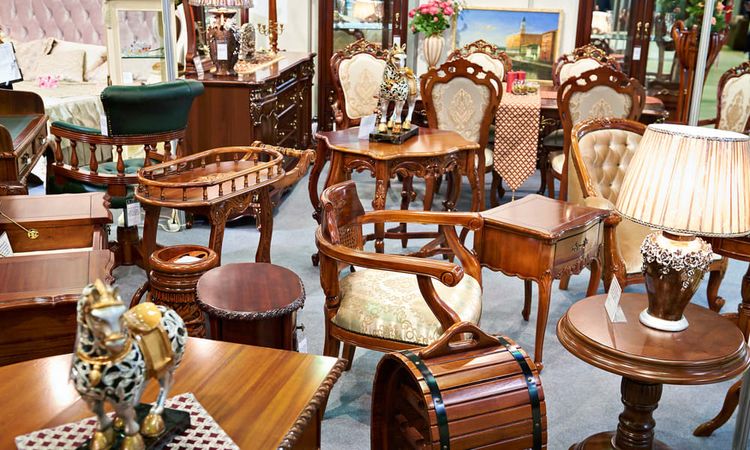Buying and Selling Antique Lamps: Identification, Valuation, Restoration, and Safe Transactions
Antique lamps represent more than just functional lighting—they embody history, craftsmanship, and artistic expression from bygone eras. Whether you are a seasoned collector, a newcomer to the antiques market, or someone who has inherited a vintage piece, understanding how to identify, value, restore, and safely trade these treasures is essential. This guide walks you through the fundamentals of working with antique lamps, from recognizing authentic pieces to navigating the complexities of buying and selling in today's marketplace.

Antique lamps hold a unique place in the world of collectibles, blending aesthetic appeal with historical significance. Their value depends on factors including age, maker, condition, rarity, and materials. Successfully navigating the antique lamp market requires knowledge of identification techniques, valuation principles, restoration practices, and secure transaction methods.
Identifying Antique Lamps: Styles, Makers, and Materials
Proper identification forms the foundation of antique lamp collecting. Understanding the characteristics that define different periods and manufacturers helps distinguish genuine antiques from reproductions. Lamps from the Victorian era often feature ornate brass or bronze bases with hand-painted glass shades, while Art Nouveau pieces showcase flowing organic lines and nature-inspired motifs. Art Deco lamps present geometric patterns and streamlined forms, typically using chrome, glass, and Bakelite.
Manufacturer marks provide crucial identification clues. Renowned makers like Tiffany Studios, Handel, Pairpoint, and Bradley & Hubbard typically signed their work, though signatures may appear on the shade rim, base, or internal components. Materials also indicate age and origin—early electric lamps from the 1880s-1920s often combine gas-era designs with electrical fittings, while kerosene and oil lamps predate electrification. Examine construction methods closely: hand-blown glass, hand-applied patinas, and period-appropriate wiring all support authenticity claims.
Assessing Condition and Value: Appraisal Basics
Condition significantly impacts antique lamp value. Evaluate each component separately: base, shade, hardware, and electrical system. Original shades, especially those with intact stained glass or hand-painting, command premium prices. Damage such as cracks, chips, or repairs reduces value, though professional restoration may mitigate losses. Original finishes and patinas generally prove more desirable than refinished surfaces.
Valuation requires research and comparison. Consult auction records, price guides, and dealer listings for comparable pieces. Factors influencing value include maker reputation, rarity, aesthetic appeal, historical importance, and market demand. A Tiffany Studios lamp with documented provenance may fetch tens of thousands, while lesser-known makers might bring hundreds. Professional appraisals provide formal valuations for insurance, estate planning, or major transactions. Appraisers should possess credentials from recognized organizations and specialization in lighting or decorative arts.
Restoring and Conserving Antique Lamps Safely
Restoration decisions balance preservation with functionality. Conservative approaches maintain originality and value, while aggressive restoration may diminish both. Cleaning should use gentle methods appropriate to materials—soft cloths for metal, specialized glass cleaners for shades, and careful dusting for delicate components. Avoid harsh chemicals that might damage finishes or decorative elements.
Electrical systems in antique lamps often require updating for safety. Rewiring with period-appropriate cloth-covered cord maintains aesthetic integrity while meeting modern safety standards. Replace worn sockets, damaged switches, and frayed cords. Professional electricians or lamp specialists should handle complex electrical work. Structural repairs to bases, shade frames, or glass require specialized skills—improper repairs can reduce value and cause further damage. Document all restoration work with photographs and receipts, as this information aids future sales.
Where to Buy and Sell: Auctions, Dealers, and Online Marketplaces
Multiple venues serve antique lamp buyers and sellers, each offering distinct advantages. Auction houses provide access to serious collectors and competitive bidding environments. Major auction houses like Sotheby’s and Christie’s handle high-value pieces, while regional auctioneers serve mid-range markets. Consignment terms typically involve seller commissions ranging from 10% to 25%, with buyers paying additional premiums.
Antique dealers offer expertise, authentication services, and established customer bases. Dealers typically purchase outright at wholesale prices or accept consignments. Specialized lighting dealers possess deep knowledge and targeted clientele. Antique shows and fairs allow direct interaction with buyers and sellers, facilitating negotiation and immediate transactions.
Online marketplaces expand reach but require careful navigation. Platforms like eBay, Ruby Lane, and 1stDibs connect global audiences. Online sales demand detailed descriptions, multiple high-quality photographs, and transparent condition reporting. Established seller ratings and buyer protections reduce transaction risks but cannot eliminate them entirely.
| Venue Type | Examples | Typical Commission/Fees | Best For |
|---|---|---|---|
| Major Auction Houses | Sotheby’s, Christie’s | 15-25% seller commission | High-value, rare pieces |
| Regional Auctions | Local auction houses | 10-20% seller commission | Mid-range antiques |
| Antique Dealers | Specialized shops | Wholesale purchase or 30-50% consignment | Quick sales, expert authentication |
| Online Marketplaces | eBay, Ruby Lane, 1stDibs | 5-20% listing/selling fees | Broad audience, varied price points |
| Antique Shows | Regional and national fairs | Booth rental fees | Direct buyer interaction |
Prices, rates, or cost estimates mentioned in this article are based on the latest available information but may change over time. Independent research is advised before making financial decisions.
Pricing, Negotiation, Shipping, and Secure Transactions
Pricing antique lamps requires market knowledge and realistic expectations. Research completed sales rather than asking prices, as listings may remain unsold at inflated values. Consider condition, rarity, and current demand when setting prices. Negotiation remains common in antiques trading—sellers should establish minimum acceptable prices privately, while buyers should make respectful offers supported by research.
Shipping fragile antique lamps demands careful packaging. Disassemble components when possible, wrapping each piece individually with bubble wrap and packing paper. Use sturdy boxes with ample cushioning material, clearly marking packages as fragile. Insurance coverage protects against loss or damage during transit. For valuable pieces, professional packing services or specialized antique shippers provide added security.
Secure transactions protect both parties. When buying, verify seller reputation through reviews, references, or professional affiliations. Request detailed photographs, condition reports, and provenance documentation. Use secure payment methods offering buyer protection. When selling, require verified payment before shipping, maintain clear communication, and document item condition thoroughly. Written sales agreements clarify terms, return policies, and dispute resolution procedures.
Understanding authentication, valuation, and market dynamics empowers collectors to make informed decisions. Whether acquiring a cherished piece for personal enjoyment or building an investment collection, knowledge and careful practice ensure rewarding experiences in the antique lamp marketplace.



